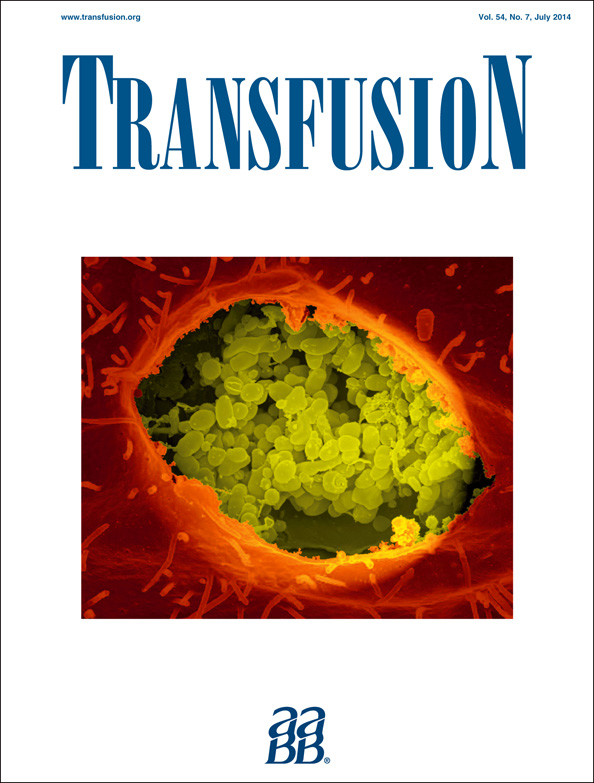Increasing susceptibility of nitric oxide–mediated inhibitory platelet signaling during storage of apheresis-derived platelet concentrates
Abstract
Background
Storage of platelets (PLTs) affects PLT integrity and functionality, a process named the PLT storage lesion. Normal PLT function essentially depends on the balanced interaction of activating and inhibitory signaling pathways. As there are poor data on the alterations of inhibitory signaling during storage of PLT concentrates, this study investigates the modulation capability of the cyclic nucleotide–mediated inhibitory pathways by use of the nitric oxide donor diethylamine diazenium diolate (DEA/NO).
Study Design and Methods
PLTs were obtained from whole blood (WB) and from apheresis-derived PLT concentrates (APCs) stored for 0, 2, and 5 days. Vasodilator-stimulated phosphoprotein (VASP) phosphorylation, cyclic nucleotide concentrations, fibrinogen binding, and agonist-induced aggregation were measured without or after stimulation with DEA/NO.
Results
DEA/NO-induced VASP phosphorylation was significantly higher in PLTs from APCs on Days 2 and 5 compared to WB, conditioned by a stronger increase of cyclic guanosine monophosphate (cGMP), but not cyclic adenosine monophosphate (cAMP), in stored PLTs. A quantity of 5 nmol/L DEA/NO neither influenced thrombin receptor activator peptide 6 and collagen-induced aggregation nor fibrinogen binding in freshly collected PLTs, whereas it significantly inhibited both in stored PLTs.
Conclusion
Stored PLTs showed an impairment of intracellular cGMP regulation, resulting in exceeding inhibition of agonist-induced aggregation and fibrinogen binding in the course of storage. The observed effects could be an important mechanism contributing to the storage lesion with reduced activating potential of PLTs.




